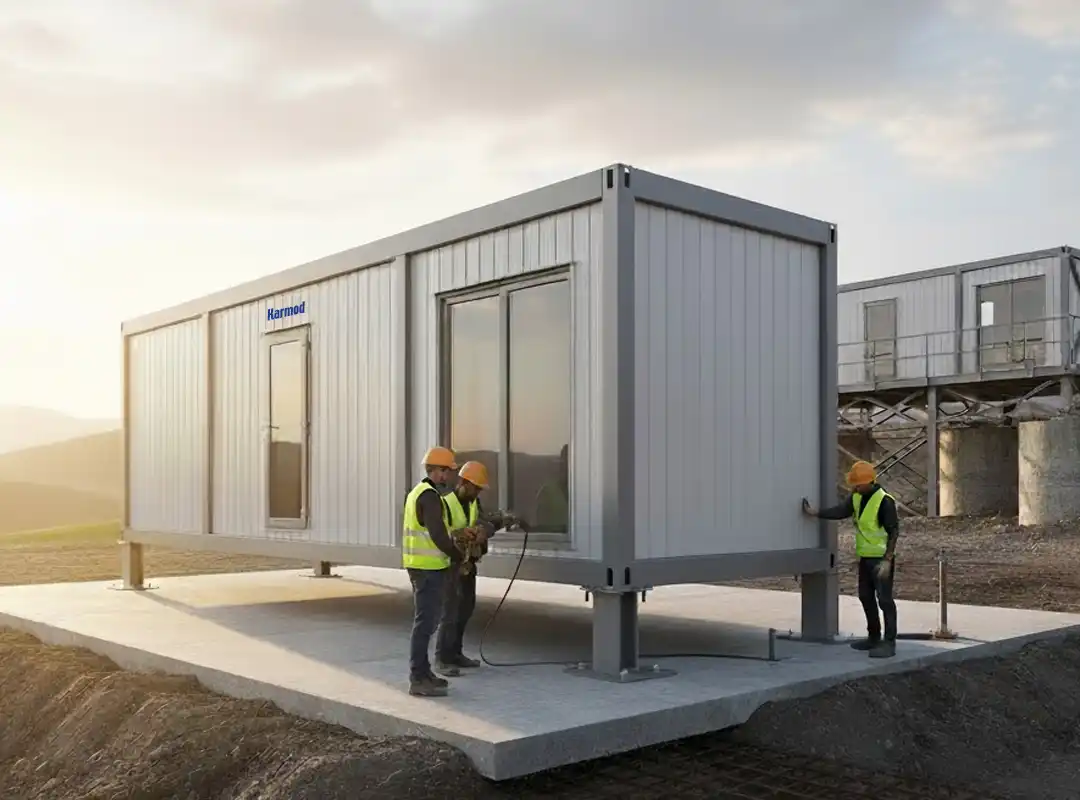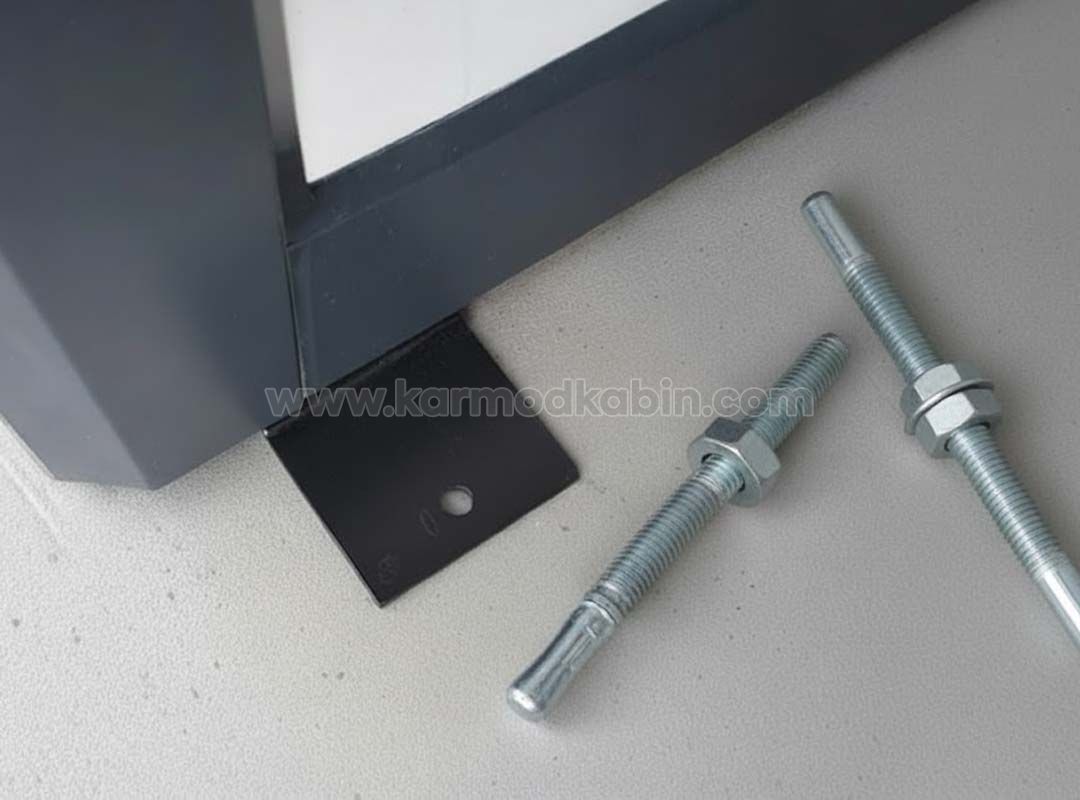
Securing prefabricated or portable cabins properly is one of the most essential steps to ensure their long-term safety, durability, and functionality. A well-anchored cabin can withstand strong winds, uneven ground conditions, and constant movement caused by weather changes or daily use. Whether the structure is used as an office, guard booth, storage room, or residential unit, proper fixing and stabilization directly influence its lifespan and overall performance.
When cabins are not properly secured, several risks emerge: misalignment of doors and windows, structural stress, water leakage, or even tilting during storms. These issues not only affect comfort and safety but also reduce the cabin’s value over time. For investors, contractors, or homeowners, ensuring strong ground contact and professional anchoring is not just a technical requirement-it’s a long-term investment in safety and reliability.
Anchoring is the backbone of any prefabricated structure’s stability. It prevents movement caused by natural forces like wind, rain, or soil shifts and ensures that the cabin remains perfectly level for years. A well-anchored cabin keeps the entire frame aligned, so doors and windows function smoothly, flooring stays even, and panels remain intact. When anchoring is neglected or done incorrectly, these structural elements begin to distort - resulting in costly repairs and decreased comfort.
Proper anchoring also guarantees compliance with local safety and building regulations. Many regions require that modular or portable buildings meet certain standards to withstand environmental stress. Using the correct anchoring system ensures that your cabin passes inspections, qualifies for insurance coverage, and meets professional quality benchmarks. It’s not just about keeping a structure still; it’s about ensuring that it remains dependable and safe in every condition.
Before anchoring begins, the first and most crucial step is to prepare a solid, level, and well-drained foundation. The base of a cabin must provide consistent support; otherwise, the structure may shift or settle unevenly over time. The ground must be compacted and leveled carefully, ensuring that the cabins weight is evenly distributed across all points of contact. Without proper preparation, even the strongest anchoring systems may fail.
Ground preparation involves a few key steps that directly influence long-term stability and safety:
A properly prepared foundation ensures that the cabin’s structure remains steady and resistant to natural forces for years. It also simplifies maintenance and reduces the likelihood of issues such as uneven flooring, cracking panels, or door misalignment.
Not all cabins are secured in the same way - the ideal anchoring method depends on the cabins size, weight, location, and usage. For example, a small security booth requires a different approach than a modular office or a multi-room prefabricated villa. Selecting the correct anchoring system guarantees both efficiency and structural security.
Common anchoring methods include:
Each method should be selected based on environmental factors like wind load, soil composition, and the type of ground surface. Professional installers analyze these details before deciding how deep the anchors should go and what materials should be used. This precision ensures that every cabin, regardless of its type or location, remains stable in all conditions.

Installing a cabin securely requires professional-grade tools and fastening materials designed to endure pressure, vibration, and harsh weather conditions. Using low-quality components can result in loosened joints, corrosion, and eventual instability. For that reason, every piece of hardware - from bolts and screws to brackets and plates - must meet industrial standards for strength and durability.
The most commonly used tools and fastening materials include:
Each of these materials serves a specific purpose, and using them correctly determines the final strength of the structure. Investing in quality components may slightly increase the initial cost but saves far more by preventing repairs or replacements later on.
A cabin’s ability to withstand different weather conditions depends directly on how securely it is anchored. A properly fixed cabin resists heavy winds, torrential rain, snow accumulation, and temperature fluctuations without structural damage. In contrast, a poorly anchored structure may shift, tilt, or even detach under extreme conditions. Stability and safety are achieved not just through the materials used but also through professional precision during installation.
Sealing the joints between the base and the cabin frame is critical to prevent water penetration. Waterproof coatings, insulation layers, and corrosion-resistant hardware keep the structure intact over time. In coastal or storm-prone regions, additional reinforcements such as deeper anchors, welded brackets, or extra steel supports are highly recommended. Regular checks and minor adjustments help maintain the original level and alignment, ensuring the cabin remains secure for decades.
The decision between professional installation and do-it-yourself setup can have long-term consequences. While DIY installation may appear to save money initially, improper leveling, incorrect anchor placement, or uneven torque can create serious issues later. These mistakes might cause misalignment, gaps between panels, or instability during bad weather.
Professional installation teams bring technical expertise, precision tools, and experience with various soil and climate conditions. They know how to measure torque correctly, secure joints at precise angles, and use industrial-grade anchors to match the cabin’s weight and type. More importantly, they ensure compliance with safety standards and provide certifications once the job is completed.
In contrast, a DIY setup often lacks the precision that ensures long-term safety. Even small errors can cause water leakage, wall strain, or structural imbalance. Therefore, choosing professional installation is always the more reliable, secure, and cost-effective solution for investors and property owners.
Once a cabin is installed, regular maintenance becomes the key to preserving its safety and structural balance. Over time, soil may shift slightly due to weather or vibration, and even high-quality fasteners can loosen. Routine inspections ensure that bolts, brackets, and connections remain tight and functional. Neglecting this step may lead to gradual misalignment or water intrusion, both of which can shorten the cabin’s lifespan.
The most effective maintenance programs include a thorough check of all visible anchor points, examination of drainage systems, and inspection for corrosion or cracks around the foundation. Professional maintenance once or twice a year helps prevent long-term issues and keeps the structure performing at its best. A properly maintained anchoring system means fewer surprises, lower repair costs, and consistent structural integrity throughout the cabin’s use.
The best way to ensure your cabin remains secure from day one is to purchase a certified, factory-tested model that comes with an integrated fixing system. Certified cabins are manufactured with precision-engineered frames, reinforced base structures, and pre-installed anchor points designed for different ground conditions. This eliminates guesswork during installation and ensures compliance with international safety standards.
When you buy directly from us, you get a turnkey cabin solution designed for maximum strength, durability, and stability. Each cabin is produced using weather-resistant materials, rust-proof fasteners, and heavy-duty steel bases. Our models undergo quality testing before delivery, ensuring that every connection point and anchor system performs flawlessly once installed. In addition, we provide detailed installation guides and technical support for each unit.
By choosing a certified, pre-engineered cabin, you invest in a structure that’s not only functional but also secure for long-term use.
Contact us today to learn more about our ready-to-install cabin models with reinforced fixing systems and discover the safest, most efficient solution for your next project.